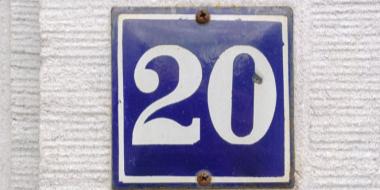How Far Back Should a CV Go? A Guide, with Tips
It can be tricky to know how far back to go when writing your CV. If you’ve got lots of experience, it can be tempting to cram it all into your CV to showcase your full range of skills and achievements. However, this isn’t necessarily always the best approach. In this article, we discuss how far back a CV should go, providing tips and pointers to help you make the best possible impact with your job applications.

Relevance of Past Experience
Relevance of previous experience is the key consideration when deciding how far back your CV should go. You only need to include previous employment if they’re relevant. Before adding a previous job to your CV work history, look at the job description of the role you’re applying for, and consider whether it helps you prove any of the necessary skills and duties of the role.
If you’re applying for jobs in a sector or role you’ve worked in long-term, you may wish to demonstrate the depth of your knowledge and the breadth of your experience. This can be helpful if you’ve built up a wealth of experience that you can put to good use in the roles you’re applying for.
There is, however, another element to think about regarding the relevance of your work history. When it comes to job applications, employers are more likely to place greater emphasis on your most recent experience, over work you did many years ago. The relevance of your work history diminishes with time, regardless of how closely it resembles the jobs you’re applying for. For many employers, your most recent track record is likely to be the greatest indicator of your future performance.
Consider Industry Standards
The amount of work history you add to your CV may depend on the type of role you’re applying for, and the industry you’re applying to work in. For fast-moving industries with a reputation for innovation and a necessity to stay up-to-date with trends and developments, a shorter work history focusing only on your most recent and relevant experience will probably make the best impact. However, if you’re applying for a traditional profession such as law, education or roles in academia or finance, it might be more suitable to list a longer, more complete work history.
Expert tip:
If you’re unsure of how far back to go with your CV, take a look at the job description. The experience requirements for the role will give you a clue about how far back to go with your work history. If, for example, the employer requires 10 years’ relevant experience, make sure your CV showcases this.
Think About Your Career Stage
The stage of your career and your level of seniority will likely play a key role in determining how far back you go in your CV. For entry-level roles or even mid-level positions, employers won’t expect to see a long work history, and it’s probably not worth reaching back to include part-time roles or less significant jobs you did before embarking on your career proper. Instead, it’s better to focus on your most recent and relevant positions. If necessary, you can use a functional CV format to emphasise your skills and educational achievements over your work history.
If you’re an experienced professional applying for managerial or director-level positions, employers may expect to see a more complete work history. This can help you demonstrate that you’ve built up the necessary knowledge and experience to assume a position of leadership or significance within an organisation. However, even in this instance, the further you go back in your work history, the less detail you’ll need to give. It’s still best to emphasise your most recent work and achievements.
If you’re not sure whether the level of role you’re applying for necessitates a longer, more detailed work history, or whether a shorter summary of your most recent experience will suffice, check the job description. Employers often indicate the length of experience they require from candidates. This can give you a clue about how much detail to include in your CV.
Balance Between Experience and Freshness
The most effective CVs strike a balance between experience and freshness. This means showing you have the necessary experience, combined with current knowledge and skills that are relevant to the role.
The standard approach is to list your work history in reverse-chronological order. This means starting with your most recent or current role, and working back from there. This gives you a structure that emphasises the freshest, most recent experiences over things you achieved further back in your career.
You can use the reverse-chronological structure to help decide how much detail to go into, and how far back to go, when writing your CV. Include the most detail for the first and most recent entries in your employment timeline, and gradually add less detail for jobs from further back in your career.
“The most effective CVs strike a balance between experience and freshness. This means showing you have the necessary experience, combined with current knowledge and skills that are relevant to the role.”
The 10-15 Year Rule
A good rule of thumb when deciding how far back your CV should go, is the 10-15 year rule. Limiting the content of your CV to the most recent 10 or 15 years should show the employer everything they need to know about your skills and experience.
Anything outside the last 10 or 15 years is much less likely to be relevant for future roles. This is because industries and working practices can change rapidly, making experience from longer ago less relevant, or even obsolete. Likewise, It's likely that your experience from more than a decade ago has been superseded and surpassed by your more recent experience.
Following the 10-15 year rule should help to keep your CV fresh, and place the emphasis on your most recent roles, which employers tend to favour. If you wish to mention employment and achievements from outside this time frame, it might be better to do so briefly. Remember, you can provide greater detail on the breadth of your experience during a job interview.
While the 10-15 year rule can be a useful guide, it’s important to remember that it’s not a hard and fast rule. If you feel your experience is your greatest asset, or you’re applying to work in an industry that places particular value on experience, you might wish to include greater detail on work from further back than 10 or 15 years.
On the other hand, if you’re applying for junior roles and you’re only just starting on your career journey, you shouldn’t feel bound by the 10-15 year rule. If you don’t have a decade of work behind you, stick to mentioning the most recent and most relevant experience. You may also consider using a functional CV and focusing on your skills, rather than listing less relevant previous employments.
Key Tips for the Most Effective CV Timeline
Follow these tips to ensure you make the right decisions about how far back to go with your CV:
- Use the 10-15 rule as a guide: it’s not typically necessary to mention more than your last 10 to 15 years of experience, so focus on your most recent and relevant employment.
- Consider your experience: if you have lots of relevant experience, you’ve worked at one company for a long time or you’ve held a particularly prestigious role, you might wish to disregard the 10-15 year rule.
- Review the job description: look for an indication from the employer of the amount of experience required for the role. If the role calls for a certain number of years’ relevant experience, make sure your CV reflects this.
- Provide the most detail on your most recent roles: focus on your most recent roles and provide extra detail on your achievements and skills in these roles. For older positions, you can add less detail.
- Aim for a maximum length of two pages of A4: the ideal CV length is between one and two pages of A4. If your work history is making the document longer, consider removing some of your older roles.
- Use LinkedIn for a complete work history: LinkedIn can be a useful place to provide a more complete work history and reference things you can’t fit on your CV. Consider adding a URL to your LinkedIn profile in your CV header.
Key Takeaways for How Far Back Your CV Should Go
The 10-15 year rule can be a useful guide when deciding how far back to go with your CV. Generally, your most recent roles and achievements will have the biggest impact on your chances of success. However, this isn’t necessarily always the best guide. If your experience is your best quality, or if the role requires someone with a long and distinguished work history, you may wish to go back further.
Using a professional CV design can help you to structure your CV for maximum impact. CVwizard has a range of CV templates to help you create a beautiful CV that makes you stand out from other candidates. You can also access a library of CV articles for tips to help you craft a winning CV. Sign up today to get started.





